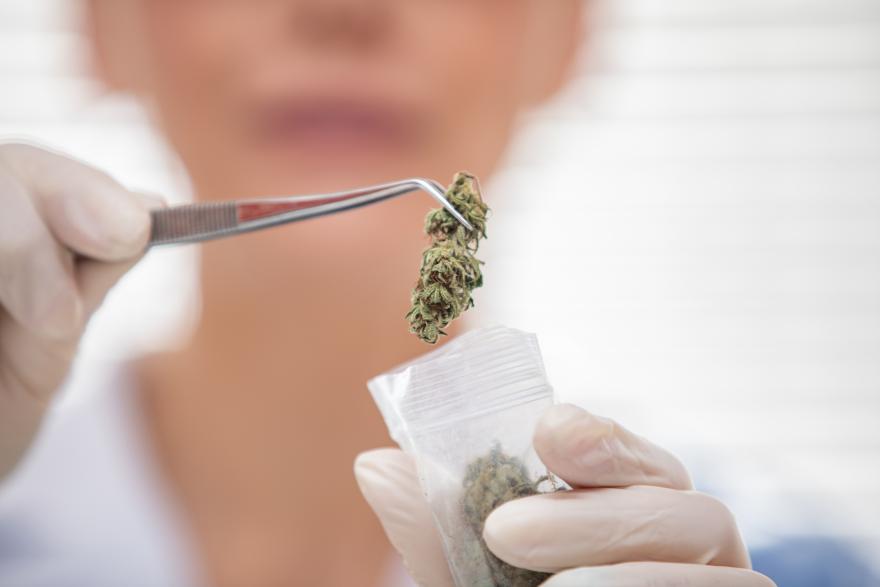In part 1 we touched on how metabolites assist in interpreting results, so this week we are going to look at this in more detail, and how a few common drugs and their metabolites can tell us about patterns of usage. We will follow this up in part 3 with a case study to illustrate how we at DNA Legal assess the whole picture when analysing the results.
The assessment of metabolites (breakdown products of a drug) are essential in reliably determining whether a donor has actively consumed the drug, and in distinguishing this active use from passive exposure to the drug in an environment. Not all metabolites are equal in what they tell us: some are more reliable markers of consumption than others, and some tell us more about how drugs have been consumed. Metabolites are formed and deposited in the hair at varying – but largely consistent – rates, so the ratios of metabolite to parent drug concentrations are considered. All this information is used to build up a picture of consumption.
Common drugs and their metabolites:
Cocaine
We know that certain metabolites are formed depending on how they were ingested. We consider four metabolites/compounds of Cocaine (the parent drug) to determine whether cocaine has been actively consumed;
- Anhydoecgonine methyl ester (AEME) is a pyrolysis product of cocaine, meaning that it is produced by high temperatures when crack cocaine is smoked. The presence of this metabolite could be due to the consumption of crack cocaine by the individual or in part from external contamination, whereby its presence in smoke can contaminate the hair (enter it directly) at low levels.
- Benzoylecgonine (BZE) - This compound is formed when cocaine is in the presence of water, usually observed when the individual has directly consumed or been amongst people who have consumed cocaine (external/environmental contamination, for example in damp conditions).
- Cocaethylene is a ‘true’ metabolite of cocaine, meaning that it can only form in the body when both alcohol and cocaine have been consumed together. It is unlikely to be formed in the environment.
- Norcocaine is another true metabolite of cocaine that is only produced in the body when cocaine has been consumed by the individual. Norcocaine is unlikely to be formed in the environment. The levels detected can be considerably lower concentrations than other metabolites (and thus difficult for most labs to detect), however DNA Legal have developed the most sensitive detection limits for norcocaine in the UK (10X more sensitive). This allows us to go beyond the threshold at which norcocaine is generally found, making our cocaine tests the most reliable and accurate as the lower limit of detection allows norcocaine to be detected at levels that would otherwise be classified as not detected.
Table 1: Example of cocaine results, including detected metabolites
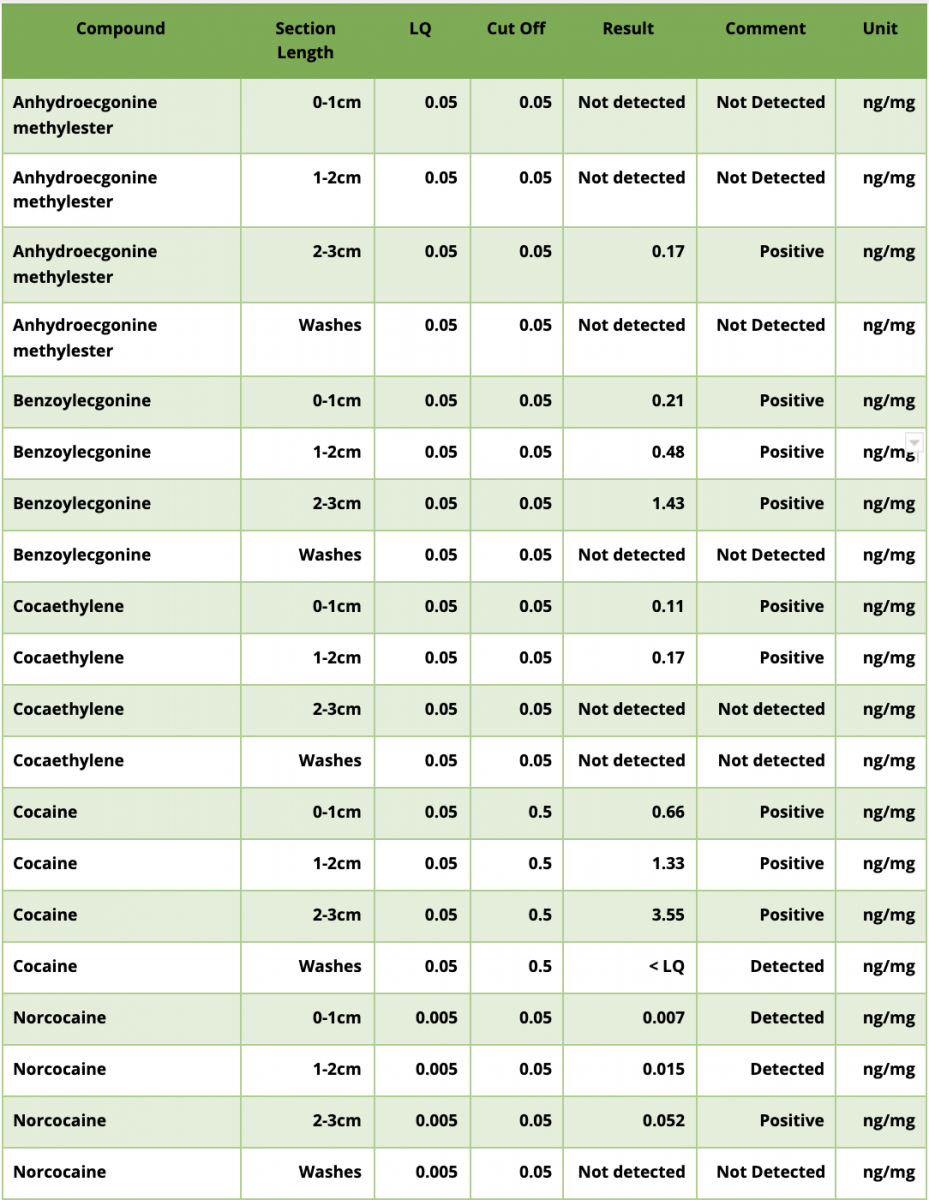
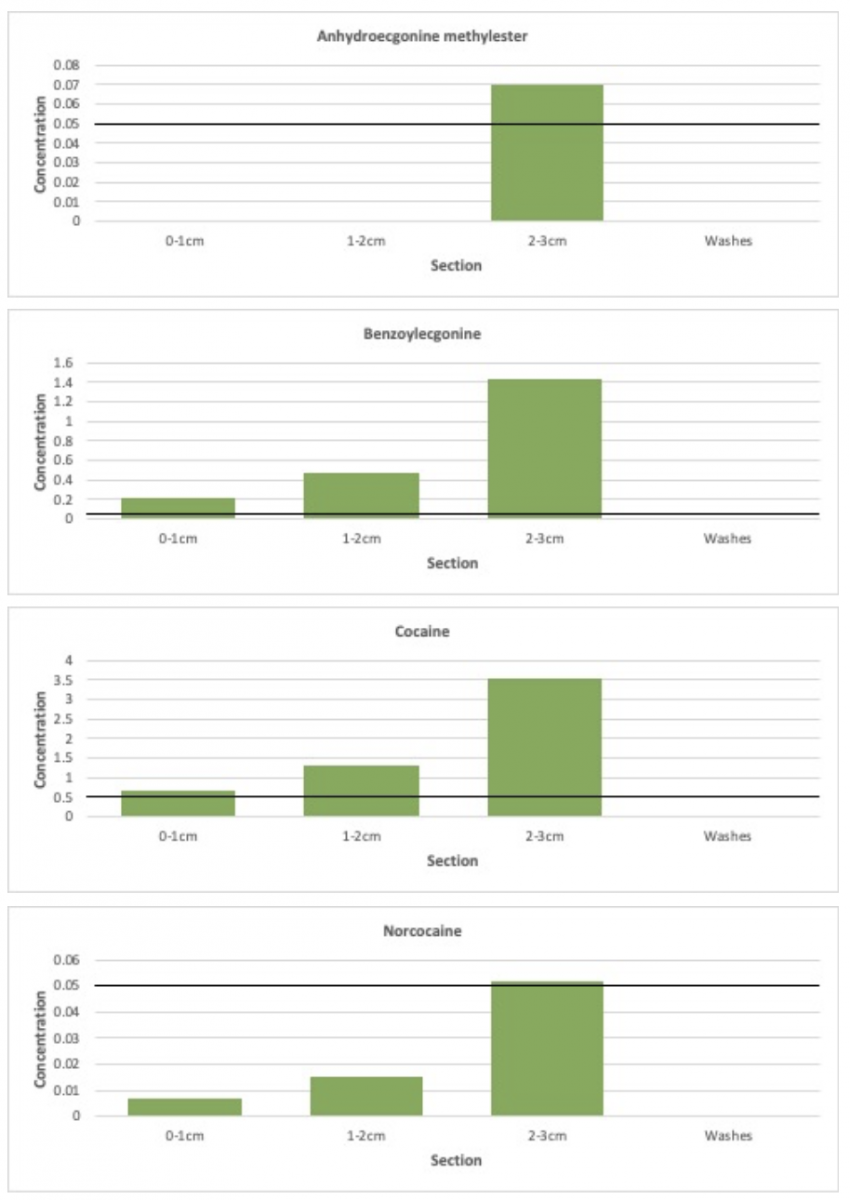
Figure 1: Example of cocaine results. Cocaine, and cocaine metabolites benzoylecgonine and norcocaine were detected in all three segments. This is indicative of the active consumption of cocaine during the tested period. In addition, anhydroecgonine methyl ester was detected in the third segment. This suggests that crack cocaine has likely been consumed during the third month. Furthermore, cocaethylene, which is a definitive metabolite of cocaine, was detected in the first and second segments. This confirms the cocaine consumption during the recent two months, but also shows that the individual has also consumed alcohol at the same time as consuming cocaine.
Cannabis
- Tetrahydrocannabinol (THC) is the principle and main component of Cannabis. When smoked, THC can be found in the environment and can deposit onto the surface of the hair and enter into the hair via passive contamination.
- 11-nor-9-carboxy-tetrahydrocannabinol (THC-COOH) is the main metabolite of THC and is not present in the smoke produced from the combustion of cannabis plant material, so the presence of this in the hair is indicative of consumption, rather than from passive exposure, as this metabolite is only formed in the body.
Cannabinol (CBN) and Cannabidiol (CBD) are two other cannabinoids that are analysed when testing for cannabis. These two substances are produced in the cannabis plant. The content of CBD and CBN and other cannabinoid constituents can vary across different species of cannabis. Therefore, the level of each of the cannabinoid compounds depends on the species and quality of the cannabis used – as well as the frequency of usage.The presence of these compounds does not necessarily indicate the active consumption of cannabis, but can aid in the interpretation of the results – especially when CBD oil is legally used.
Table 2: Example of cannabis results with metabolite THC-COOH.
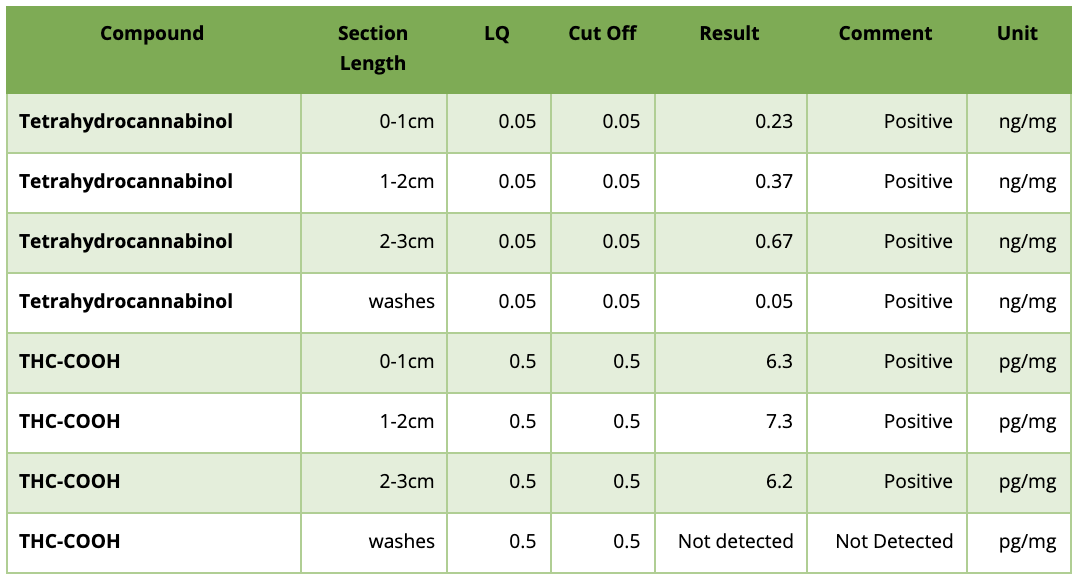
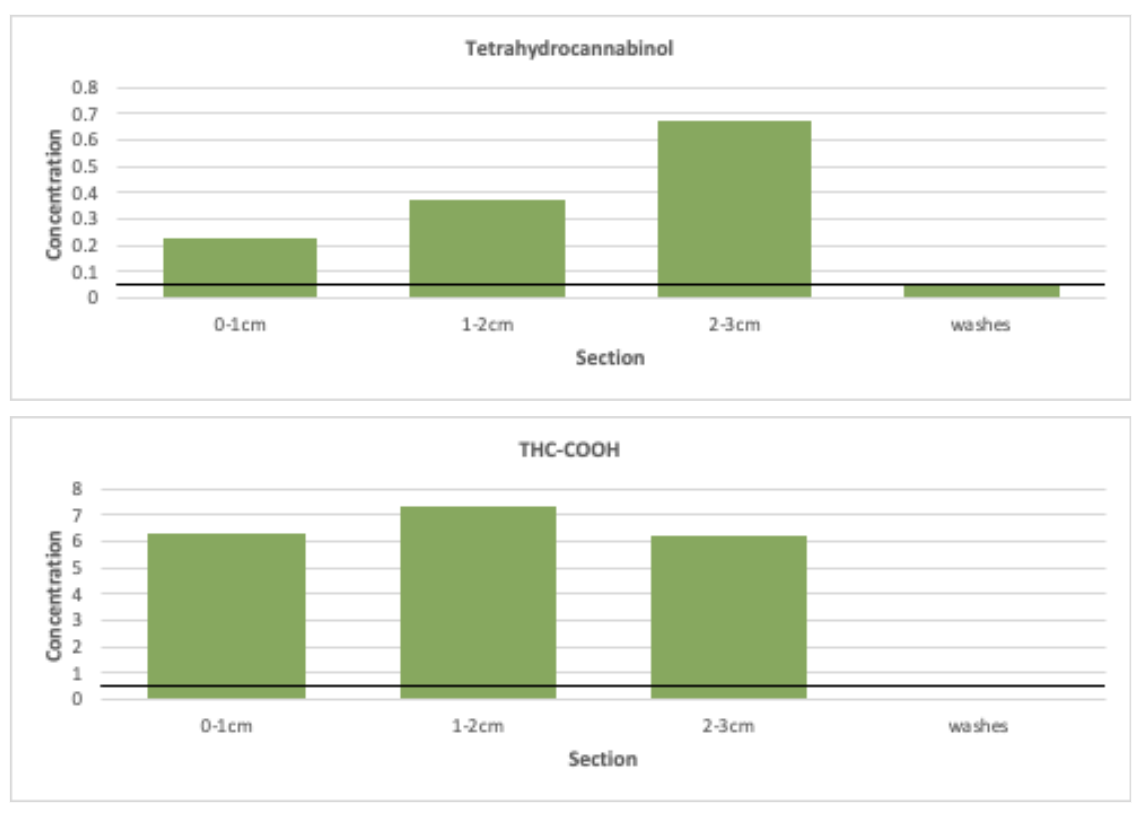
Figure 2: Example of cannabis results. In this case, THC and THC-COOH were detected in all three segments. The presence of cannabis metabolite, THC-COOH, in the hair sample provides additional evidence to confirm the active consumption of cannabis during the three month period.
Heroin
- Diamorphine (Heroin) is metabolised in the human body system into 6-monoacetylmorphine (6-MAM) and morphine, which makes the presence of 6-monoacetylmorphine a metabolite unique to heroin abuse. As heroin is removed quickly from the body, the concentration of 6-MAM is therefore considered, rather than heroin itself, when determining whether heroin has been consumed during the tested period.
- 6-MAM is then further metabolised to morphine. Therefore, the presence of 6-MAM and morphine strongly supports the hypothesis of heroin consumption
Table 3: Example of heroin results
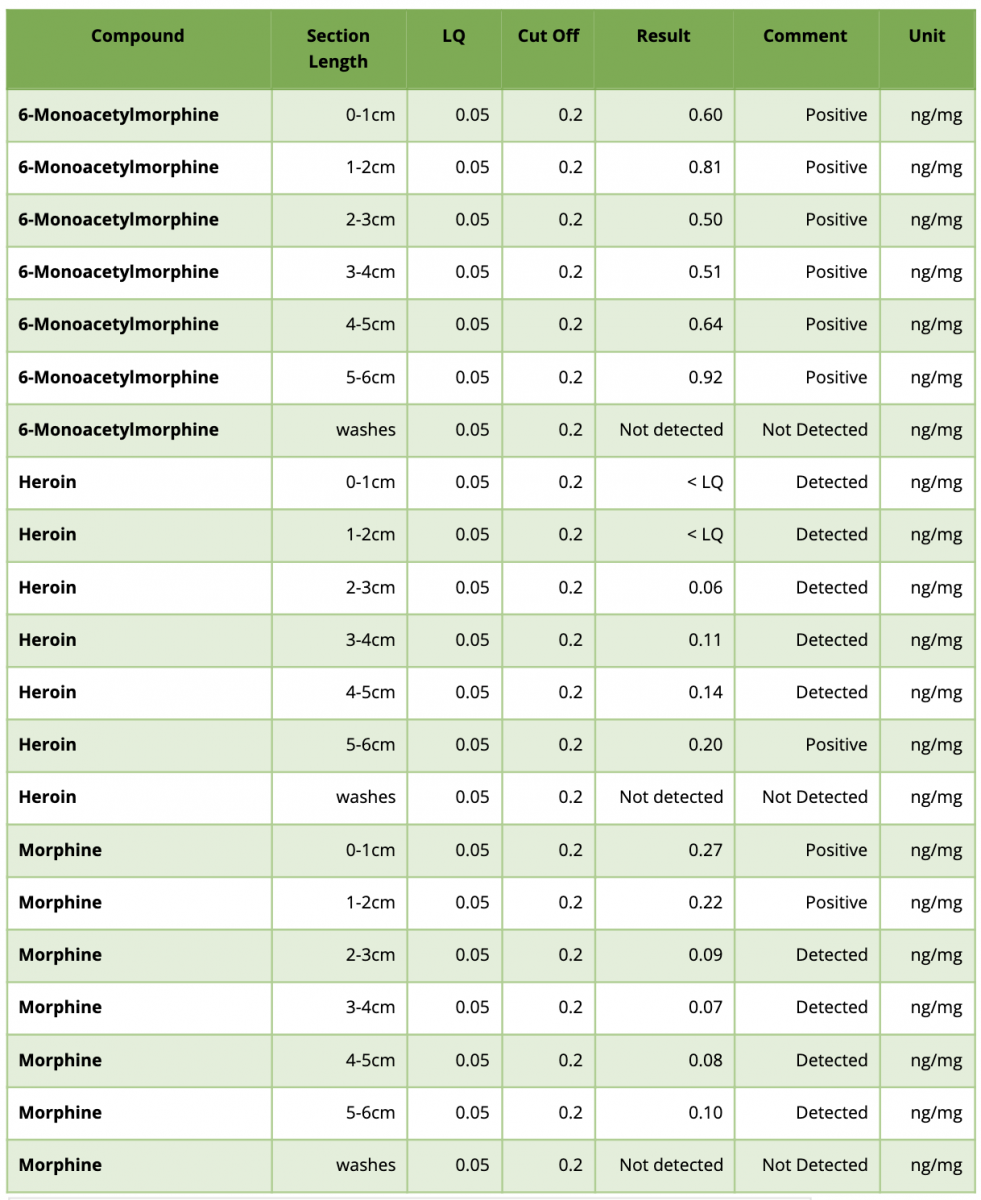

Figure 3: Example of heroin results. 6-MAM is a true metabolite of heroin abuse. As you can see, in this case, 6-MAM and morphine are detected in all six hair segments, whereas heroin is only detected in the distal four segments. The detected 6-MAM and its metabolite morphine in this case indicates the repeated consumption of heroin during the six monitored months. However, if heroin was solely considered when interpreting heroin results, the results would likely provide false negative or under interpreted results, providing incorrect evidential material to the case.
To be continued next week ...

